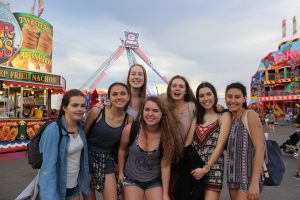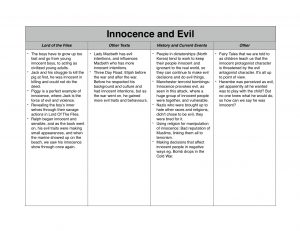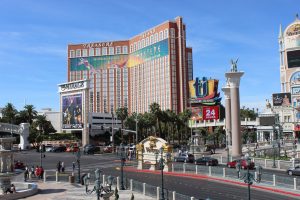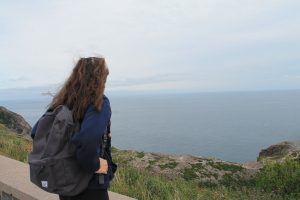For me, talking, or even thinking, about Grade 12 has been a sort of taboo topic for as long as I can remember. It’s the big leagues, the scary part of high school where you actually have to think hard about the rest of your life. I used to look at my last year of high school as the worst part, but as the dreaded year looms over my head, I’ve come to the realization that it’s not as bad as I’ve pictured it for my whole life.

And this is convenient, as we have come to the time of the year where we usually complete our SLC’s. But Willemse and Hughes shifted things up a bit, and instead of a Student Led Conference, we are presenting a TPOL aka our Transitional Presentation of Learning. It’s pretty much the same format, where we speak to our parents and teachers and tell them about the best pieces of work from the year, how we have grown and improved in certain areas, and a goal or two we have. The main difference is that we also have to explain what skills and improvements we have developed that demonstrate, that as a learner, we are prepared to be a Grade 12.
I know that being a part of PLP for three years has really helped me come to this realization that I am more prepared for the shift than I’ve thought in the past. When I heard that the main goal of the TPOL was to show that I’m ready for grade 12, I had to ask myself “Gabi, what makes you sure that you are ready for your last year of high school?”, and my first answer was “Well, you passed all your courses, and you’re pretty organized and smart,”. But as soon as I thought more about it, I knew that I’ve gained so many important skills through PLP that will help me in my future of academics and beyond. With all of the amazing opportunities and experiences that I’ve come across in the last 4 years, I have been exposed to real life, and I can confidently say that I am ready to jump head-first into my senior year.

The Performance Learning Program has taught me that growth is one of the most important parts of learning and improving. If you can see a drastic change (a good change) in someone’’s approach to learning, it shows that they take a great pride in what they do, and care enough to strive to make everything they do even better than the thing before. So with this in mind, I can say that I have demonstrated a growth in my approach to my own learning. I have become someone who is ready and willing to face challenges, regardless of the difficulty, head on! Before joining the program, I never really considered myself one to jump at the opportunity for a challenge or hard task. Through my hard work and growing self-confidence, I have been able to open up to a wider variety of new things and ask myself “Well, why don’t you try it? What’s the worst that could happen?”. I find that I am also able to bounce back from a task that didn’t go the way I first planned, and end up with a final product that is 110% better, an example being our recent Southwest Video Essay. I had trouble getting an idea started, and ended up having a difficult time. But once I got back on my feet with a new and improved idea, I worked extremely hard to complete the task with a fantastic end product, which ended up turning out great!
With all of the good things that have come about in my learning this year, there are always bound to be the few that I need to work on and improve. In this case, I would love to work on stepping up as a leader in class and around my community. I have always been a shy-ish person who is ok being out of the limelight, but I think if I want to excel further, I need to be able to be courageous enough to lead, whether it’s in a group project, or a volunteer position. This quality could very well play a role in my future, and it would benefit me to have mastered it as soon as possible. An example from earlier in the year where I think I should have stepped up as more of a leader, is during the Macbeth Project. Even though most of the management for the project (other kids in my class trying to run it all) was falling apart and I’m not sure I could’ve done much in the end, I wish I would have put my hand up for a leader of a management group or stepped up earlier. Somewhere inside me, I think I am a leader at heart, but I feel nervous to show it, because it may not be what people expect of me. Once I overcome this, I can show that I am a leader, and that I am as able as anyone!
If there were to be one thing I could go back and change from this year in PLP 11, I would like to go back about a week to the Debate Battle Dome, pretty much for the fact that I wish I spoke up more. In my defence (against myself), the competition was intense and crazy, and getting any words in was a challenge, but even so, I think I should have tried harder. My group and I prepared as much as we possibly could, and yet, there seemed to be a shortage of words on my end, and an endless supply for Matt. S, one of my group members. It felt like there was nothing in my brain, and I think this was due to me hyping myself up with all the things that I could think of that could possibly have gone wrong. For a glimpse into my head while I was mentally prepping myself, thoughts like these were running through my brain: “People could laugh at what I say, I could pass out at the podium, I might be shaking so hard that I end up speaking gibberish”. Yeah it was pretty bad. Because of these negative ideas, I was repulsed to imagine myself speaking at the mic for more than 5 seconds, yet I achieved at least 30 seconds. My point is that I was disappointed afterwards, by the fact that I was coming up with great things to say, as soon as it was all over. I knew I had the confidence in me, but negativity and the scaredy-cat in me won over. I want to change this, so that in the future I can stand up in front of 20, 50, 100 people and express my ideas and arguments. PLP has given me so many public speaking opportunities and I have softened the scared Gabi inside, but I understand that instead of beating myself down, I have to think positively and supportively of myself, in order to break whatever doubts I have.
Recognizing my strengths and areas of improvement are huge steps to taking ownership of my learning and attitude towards my future decisions about my life. If I know what I excel at and what I need to do in order to be a better version of “Gabi”, I can work towards success. PLP has given me the opportunity to learn better than I have in my whole life, and to be honest, I’m not really scared or nervous to be transitioning on into Grade 12. I have confidence, a strong head on my shoulders, and the ability to think critically and creatively. Though I may not know the path I will take, I’ll know who I am, and that is the most important thing.























